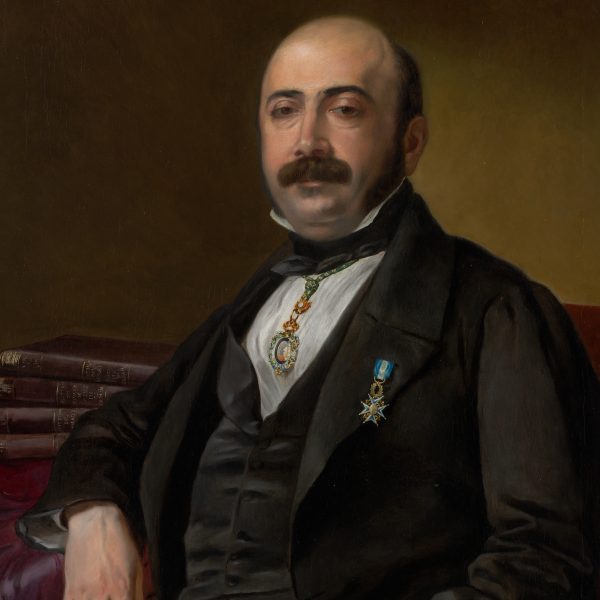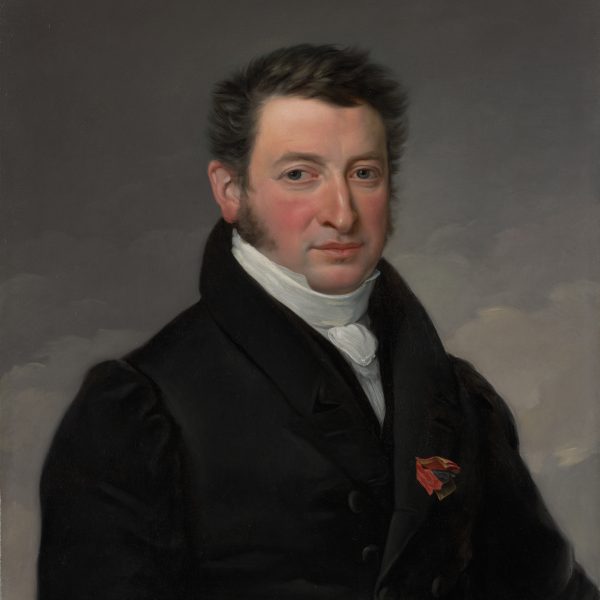Madrazo y Agudo, José de
(Santander, 1781 – Madrid, 1859)
José de Madrazo es una figura fundamental en el panorama artístico español del siglo XIX gracias a su posición en la Real Academia de Bellas Artes de San Fernando de Madrid y a su cargo como director del Real Museo (hoy Museo del Prado), instituciones que contribuyó a modernizar. Además, su pintura ocupa un lugar principal en la formulación y evolución del neoclasicismo en España y fue el patriarca de una de las sagas de artistas con mayor trascendencia e influencia de toda la centuria. Nacido en Santander, su formación se desarrolló propiamente en Madrid, después en París, desde 1801, y en Roma, a partir de 1803. En la Ciudad Eterna se incardinó muy pronto en el floreciente panorama cultural de la nueva ciudad napoleónica y gozó de gran prestigio y fama, beneficiándose también del mecenazgo de Carlos IV.
Allí realizó su obra maestra y una de las imágenes fundamentales de la pintura neoclásica española: La muerte de Viriato. En ese momento comenzó además a cultivar su facet como coleccionista, que le llevaría a atesorar una importante colección pictórica. Tras su regreso a España en 1814 se dedicaría especialmente al retrato, si bien su trabajo como pintor se vio condicionado por los numerosos desempeños profesionales en la estructura artística de la corte. Su estilo deriva de las enseñanzas de David, en cuyo taller se formó en París y bajo cuya influencia realizó algunas de sus mejores obras, pero evolucionó posteriormente hacia tendencias más renovadoras, como evidencia su Autorretrato. Su posición le hizo acaparar a la clientela más selecta, tanto en Roma como en Madrid. Parte de su acervo documental, entre el que destaca su nutrido e interesante epistolario, se conserva en el Archivo del Museo del Prado y constituye una fuente documental de primer orden para el estudio del siglo XIX en España.


